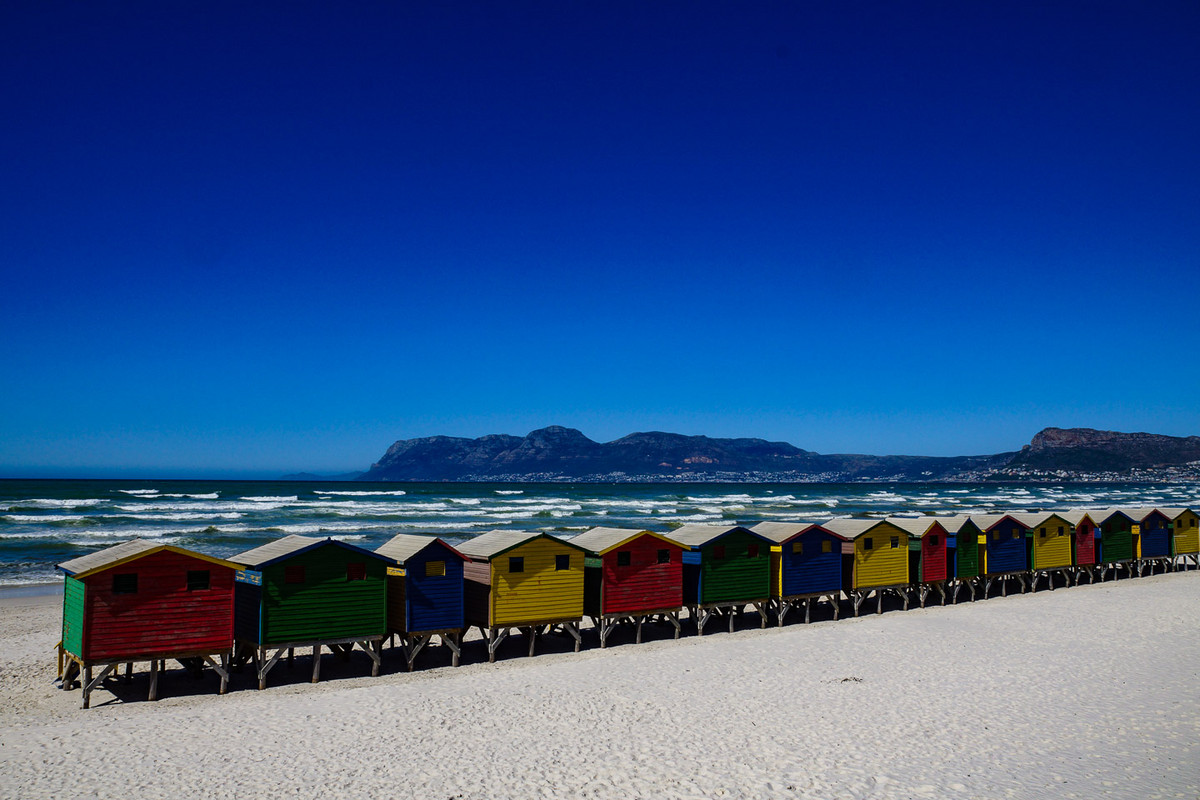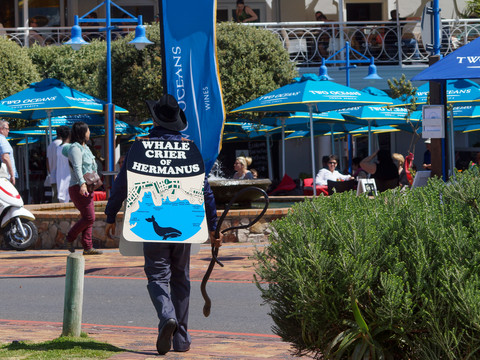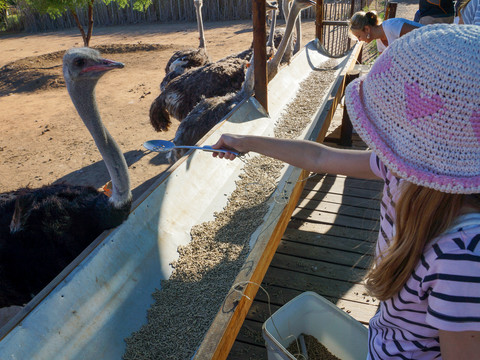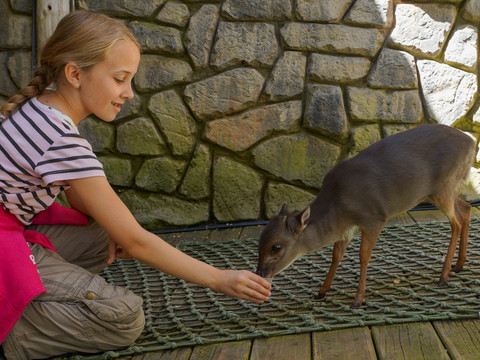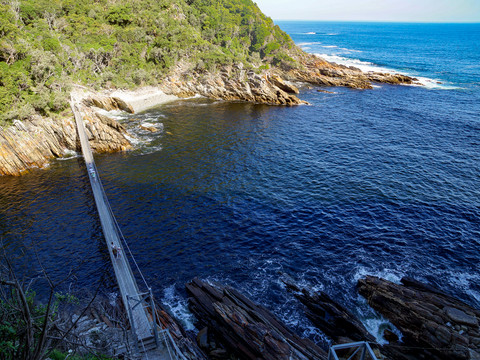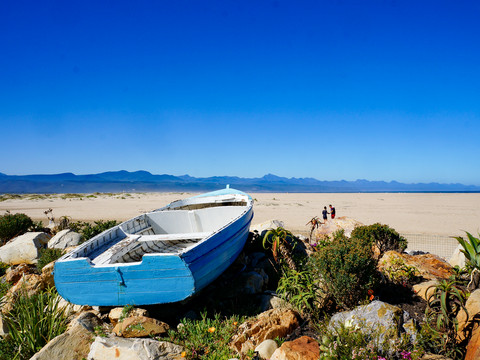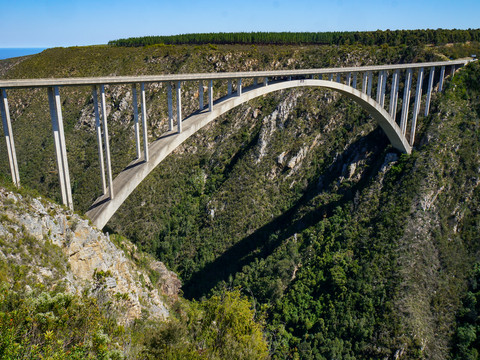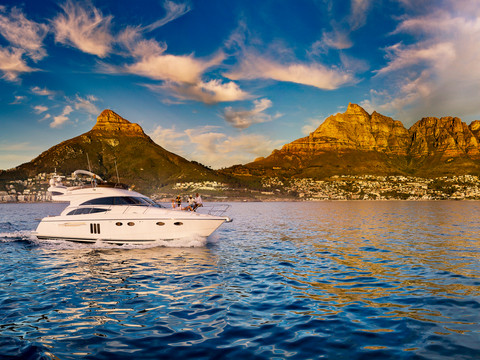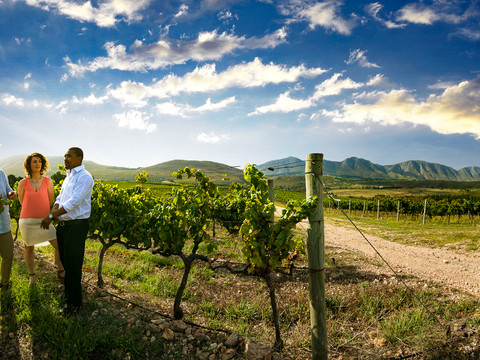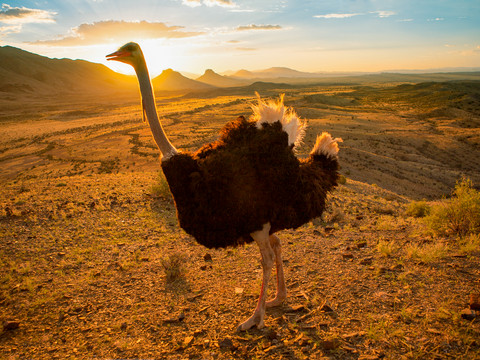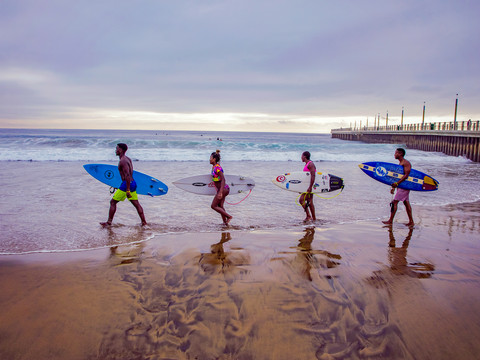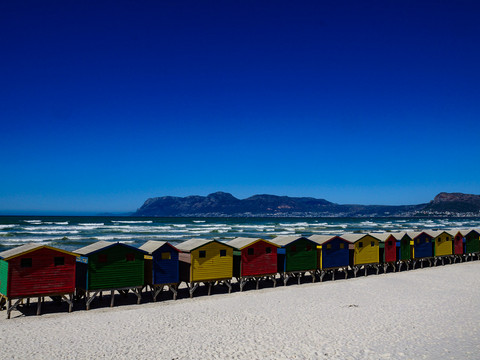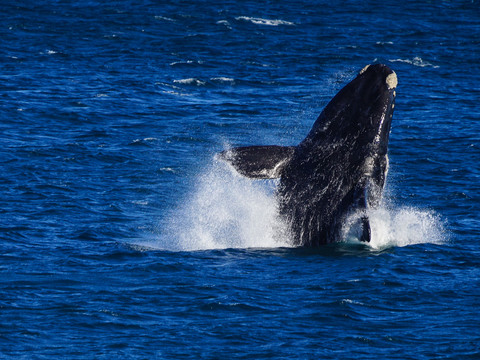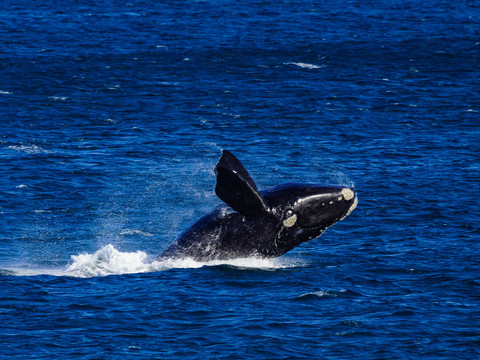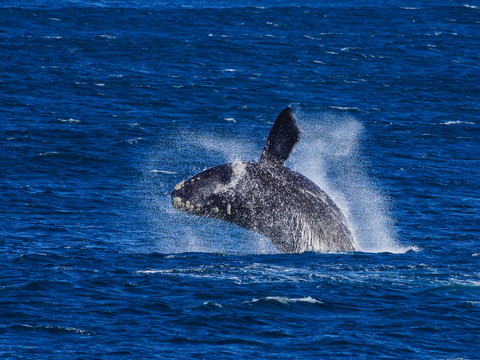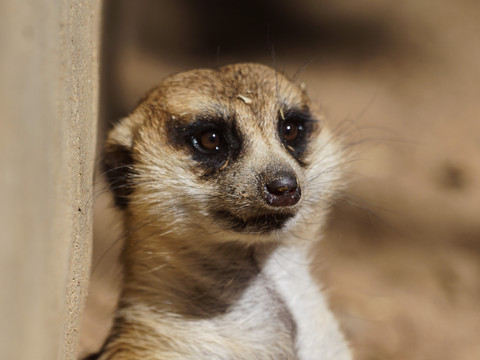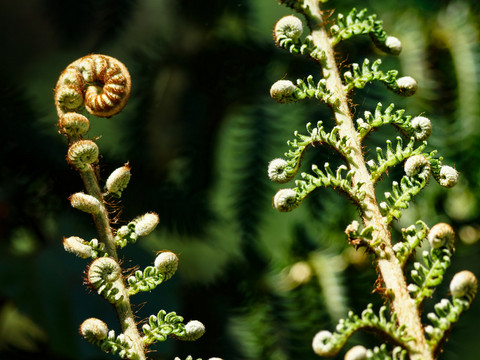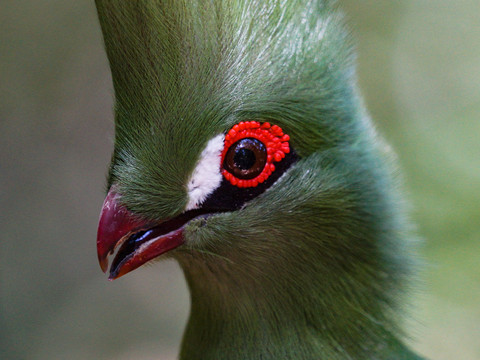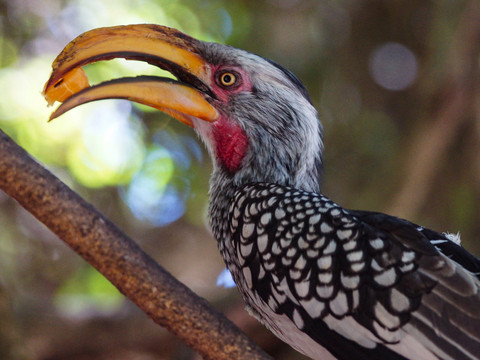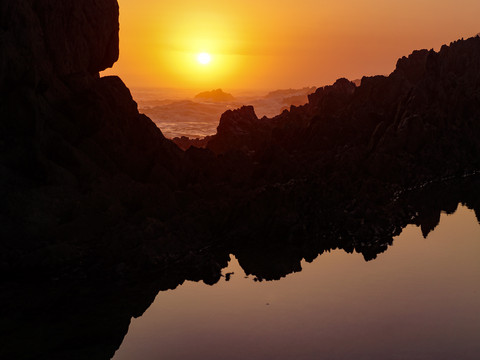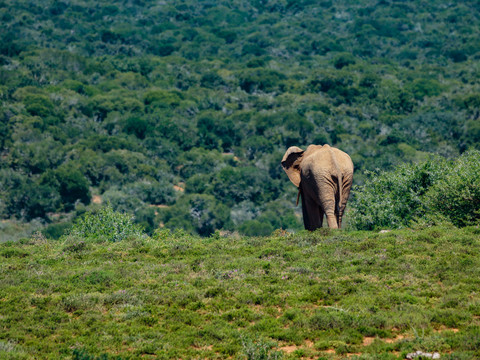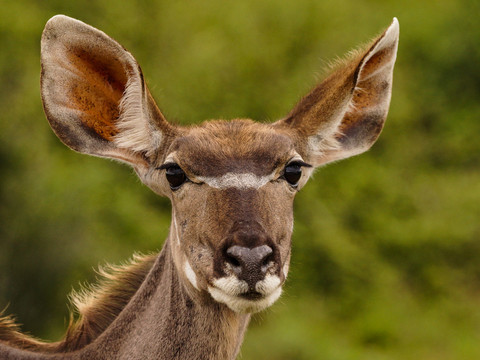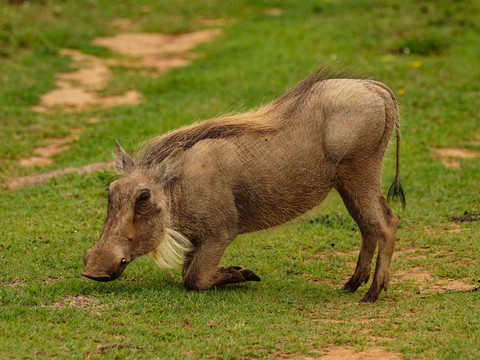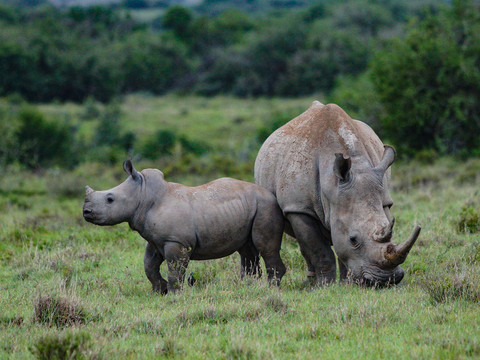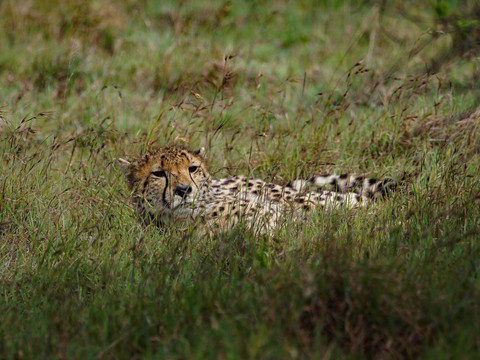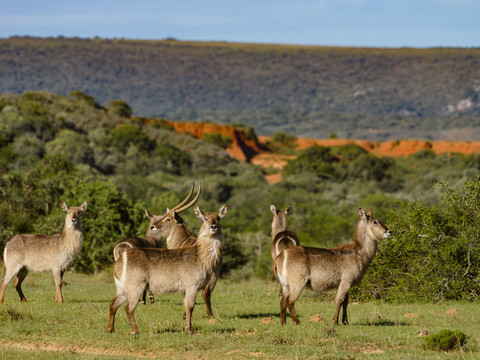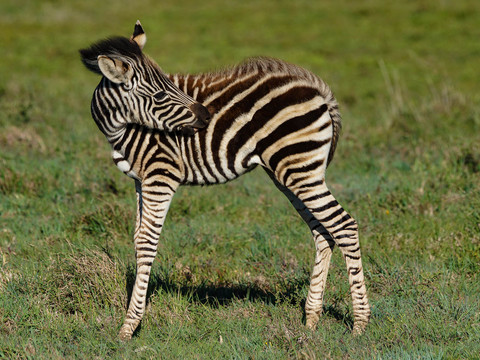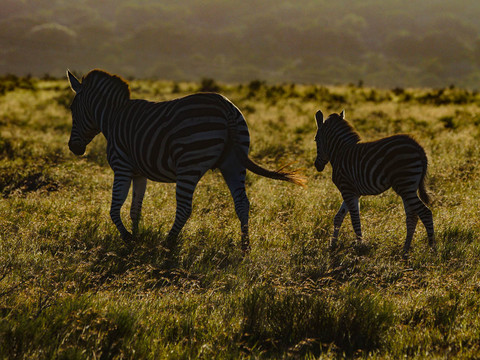The Garden Route in the very south of South Africa is the most popular and easiest road to travel in the country and is made for a road trip. The dream route between Cape Town and Port Elizabeth offers numerous highlights that show you the diversity of South Africa in "miniature". Whether observing wild animals in Addo Elephant Park, hiking in Tsitsikamma National Park, visiting an ostrich farm in the hinterland, whale watching or surf lessons in Hermanus and a wine tasting in Stellenbosch, the Garden Route has something for every taste.
Officially, the Garden Route stretches 370 kilometres along the coast from Mossel Bay to Port Elizabeth, but the route between Cape Town and the coastal town of Mossel Bay, as well as the wine route in the hinterland, which takes you through the Karoo, past Oudtshoorn and over beautiful mountain passes to Paarl, also has a few surprises in store and can be combined perfectly with a round trip.
Start your road trip in Cape Town, for me one of the most beautiful cities in the world. Cape Town is lively, modern, colourful, culturally diverse, historic, but also wild. And the best thing about the city: you could probably always do something different 365 days a year, because there is definitely no lack of variety of activities!
For more on Cape Town and the Cape region, see the report under cities. As soon as you have left Cape Town and Table Mountain behind you, you will head east along the coast. Soon you reach the first highlight, the legendary Chapman's Peak Drive, one of the most beautiful panoramic roads in the world. A new, breathtaking view of the mountains and the sea awaits you around every bend.
From here it is not far to Muizenberg. What a casual surfer's oasis! While sitting in a café, you can watch the surfers master the waves. Or you can hop on a board yourself. You can rent surfing equipment right on the beach promenade. The beach is also home to the famous colourful wooden houses and just around the corner the cute penguins are waiting to be photographed.
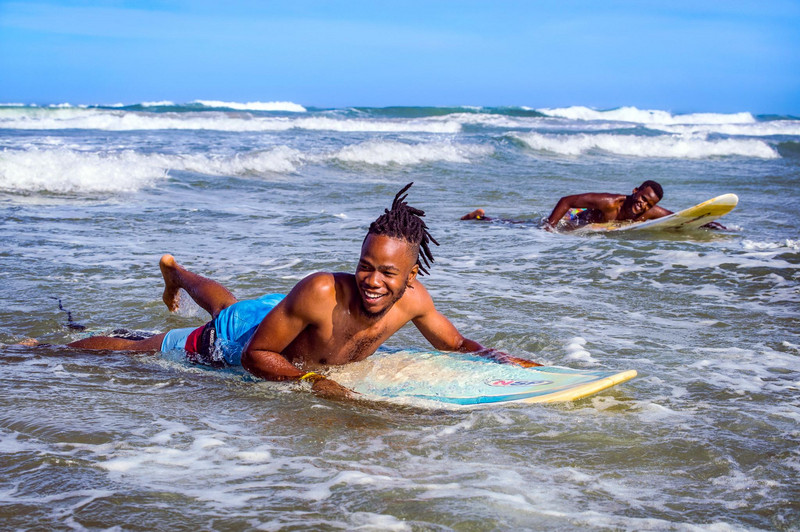
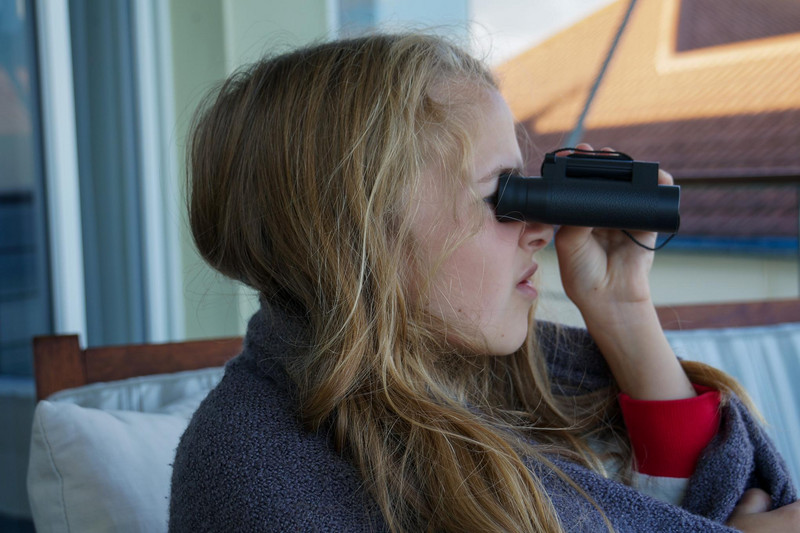
Next stop Hermanus, which is called the Whale Capital of the World and not without reason. If you are there between June and November, which I highly recommend, you can watch southern right whales in the bay from land. Every year, the whales make the journey of up to 8,000 kilometres from the waters of Antarctica to the Cape to mate and give birth to their calves in the bay. Apart from the giant marine mammals themselves, Hermanus' most promotional attraction is probably the so-called "Whale Crier", invented by a resourceful businessman in 1991. In season, he walks through the town with a horn made of seaweed and a uniform, tooting as soon as a whale is sighted. The best "whale" viewpoints stretch from Hermanus to De Kelders to De Hoop Nature Reserve, which for me is one of the most beautiful places on the South African coast. Here you encounter white sand dunes, which contrast beautifully with the turquoise blue sea. Worth a visit in the reserve is the unique wetland "De Hoop Vlei" with 260 bird species.
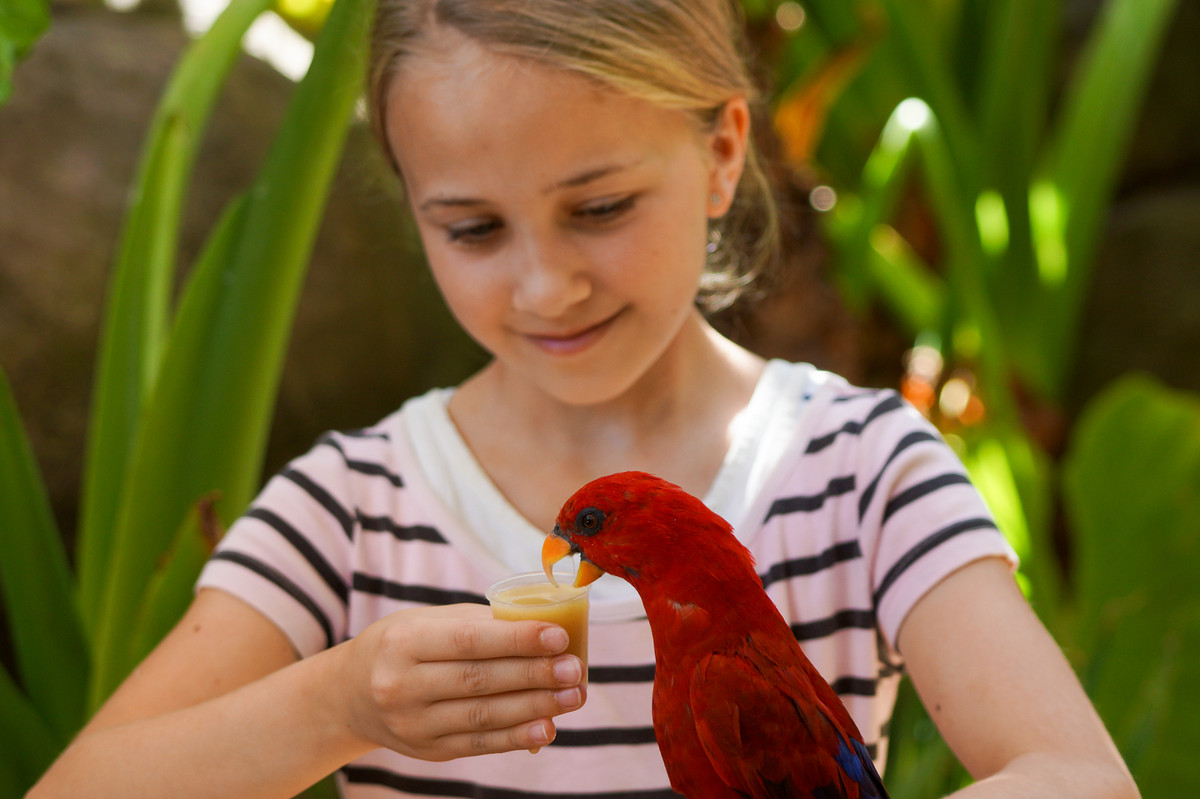
When you arrive in Mossel Bay, you could consider spending the night in a discarded train. Two excursions into the surrounding area can be easily included in the programme from here. At Botlierskop Private Game Reserve you can discover the Big 5 on a safari, or you can venture along the coast in a cage that takes you underwater at a safe distance from the sharks. If you like to drive passes - not far from the town of George starts the Seven Passes Road with 7 passes, which leads over green hills and past deep gorges and ravines as well as rivers, streams and dense forest. Or take a hike to the "Map of Africa" Viewpoint. From up here you can enjoy the incomparable view into the gorge of the Kaaimans River.
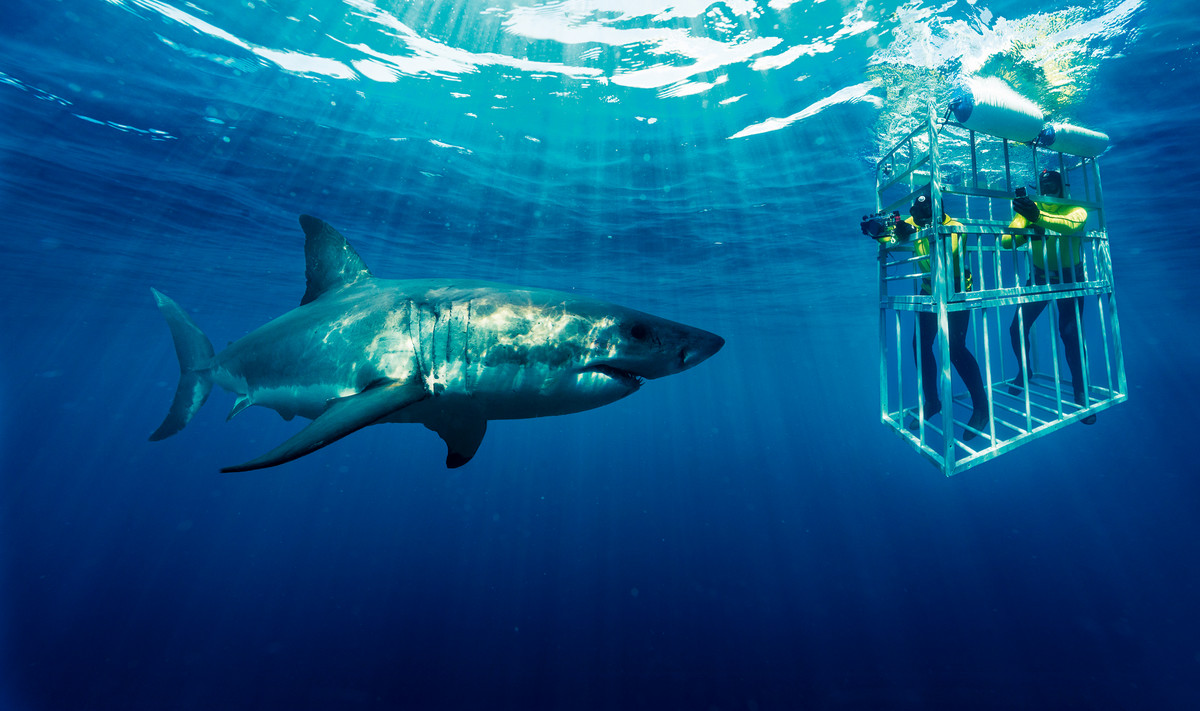
The road along the Garden Route inevitably leads you next to the lagoon town of Knysna. Outside is the salt water of the ocean, inside the lagoon is fresh water. If you like hiking, you will find a variety of trails on the Knysna Forest Trail, which is part of the Garden Route National Park. The trail to East Head View Point is recommended, from where you have an unobstructed view of the lagoon. The impressive Knysna Heads cliffs narrow the lake access to less than 200 metres wide. By the way: Oysters are still farmed in the lagoon - fans of this seafood will get their money's worth here. If you love elephants, you should stop at the Knysna Elephant Park. Here you get the chance to walk with the pachyderms.
Next sightseeing stop is the pearl of the Garden Route. The cosy town of Plettenberg Bay is famous for its extensive sandy beaches and is therefore ideal for a swim. Keurboom Beach to the northeast is considered one of the most beautiful beaches in South Africa. As there are coral reefs off the coast, snorkelling and diving are particularly popular sports in Plettenberg. An underwater dive trail has been specially marked on the main beach. Incidentally, the bay is also popular with dolphins. Wonderful views above the water surface can be found on the Robberg peninsula. There are three hiking trails of varying lengths in the nature reserve of the same name. Be sure to visit the resident seal colony.
Also worth an excursion is a visit to the huge open-air aviary "Birds of Eden", where you can observe 220 bird species at close quarters and without bars along paths.
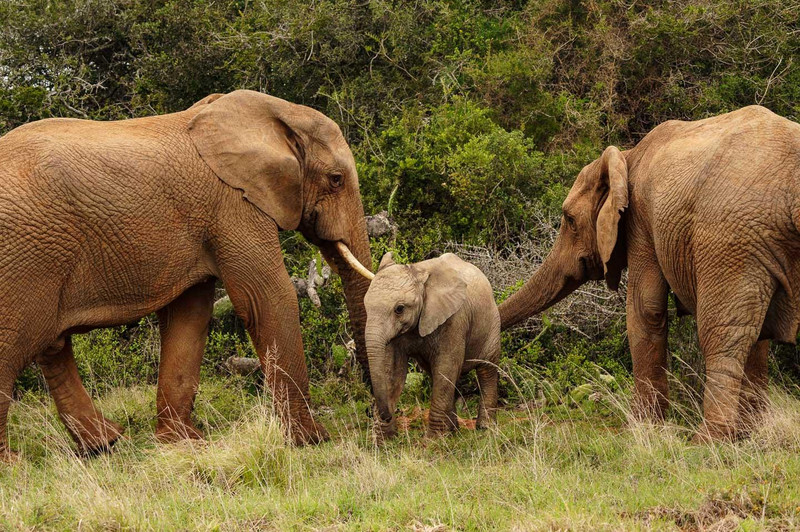
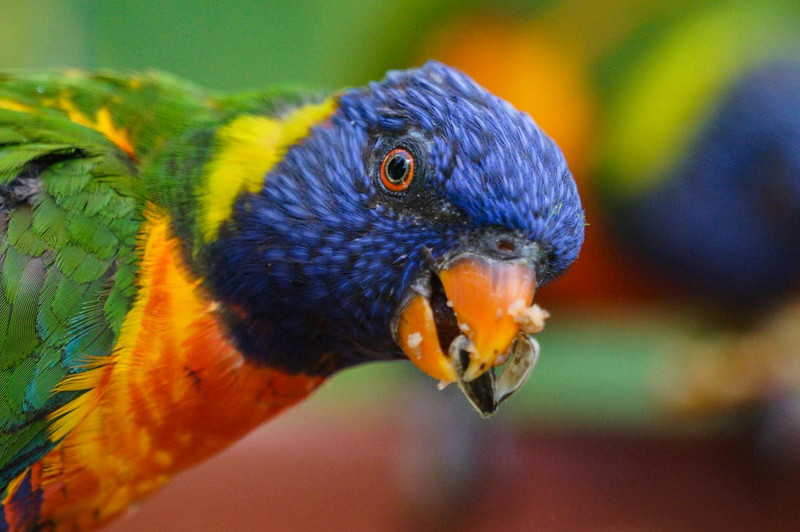
What an oasis! Tsitsikamma National Park, a little further east, is definitely one of my absolute highlights of the Garden Route. Here you will find beautifully laid out hiking trails to discover the dreamlike nature. One popular trail is the Waterfall Trail. It takes you to a beautiful waterfall with a natural pool within 90 minutes. Be sure to stay overnight directly in the national park. At Storms River Mouth Restcamp, chalets with ocean views are available for rent - sunset included. In the evening you can watch dolphins competing in the roaring waves. For adrenaline junkies, not far from the national park is the Bloukrans Bridge, said to be the highest bridge bungee jump in the world at 216 metres.
Jay Bay is THE address on the Garden Route when it comes to surfing. Surf junkies from all over the world meet here. Not only because the place itself is really relaxed and cool, but also because you can surf some of the best waves in the world here. The Super Tubes waves can get up to 3 metres high and 800 metres long. How about a beginner's surfing course?
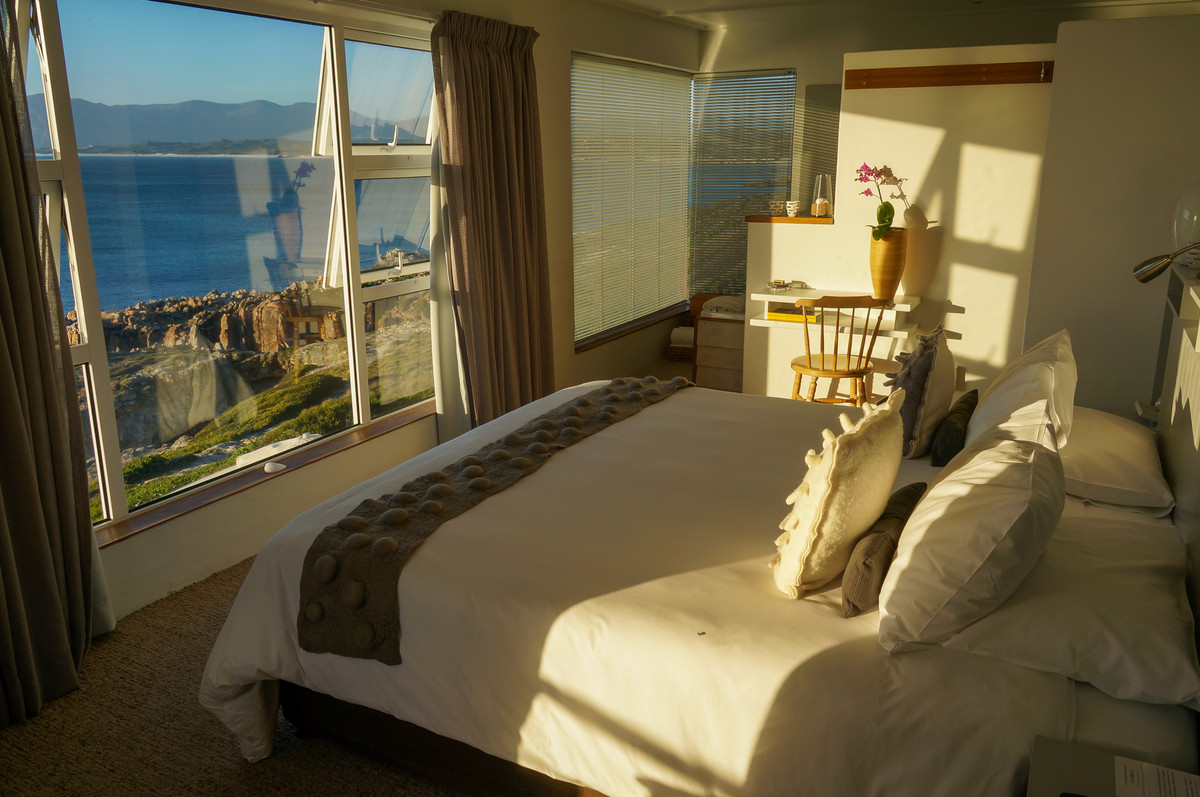
Finally, Port Elizabeth at the end of the Garden Route awaits you with beautiful beaches, historic buildings and a variety of leisure activities. Due to the good wind conditions, you can sail and windsurf here. 80 kilometres inland, the magnificent Addo Elephant National Park beckons, which you can also easily manage in a normal car. You may not be able to see all the animals of the Big Five in the park, but you can see lions, water buffalo and elephants.
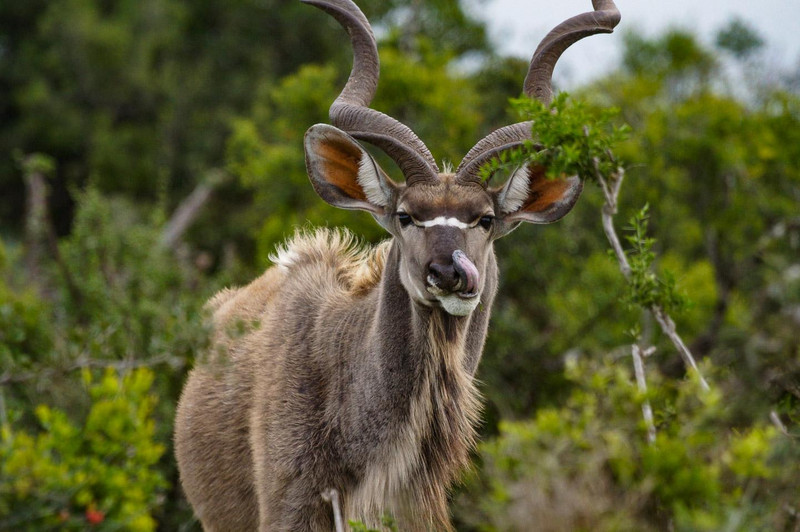
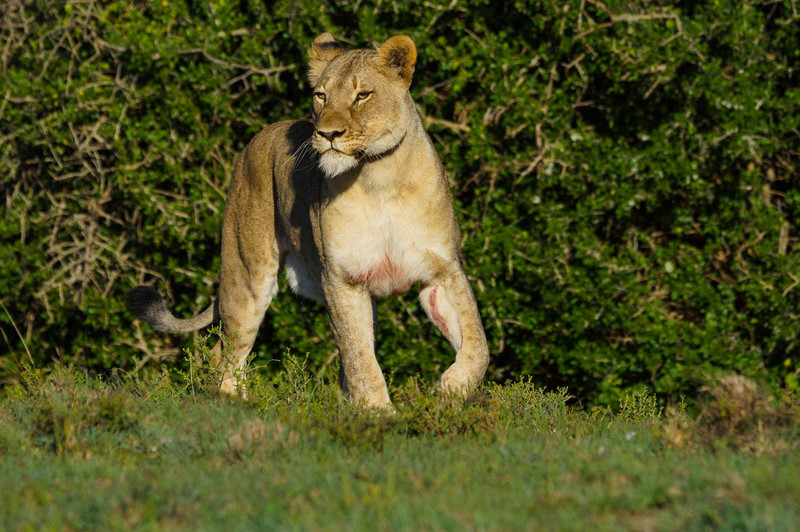
If you have not considered a one-way rental, we recommend returning to Cape Town through the interior of the country on the so-called Wine Route. Oudtshoorn is worth a first stop. The capital of the ostrich industry is located in a scenically beautiful region of South Africa, the small Karoo. In earlier times, the great ostrich barons made a fortune from the feathers. At that time, a single feather cost just under 25 francs. You can get a close-up view of the flightless birds on countless ostrich farms. Other worthwhile excursions in the region are the Cango Caves - an interconnected cave system - a drive over the breathtaking Swartberg Pass or for all early risers a guided meerkat safari. Before sunrise you drive with a ranger to the farm area and wait for the first rays of sunlight. With these, the lively "meerkats" come out of their burrows and can be observed in their natural environment. A highly recommended experience.
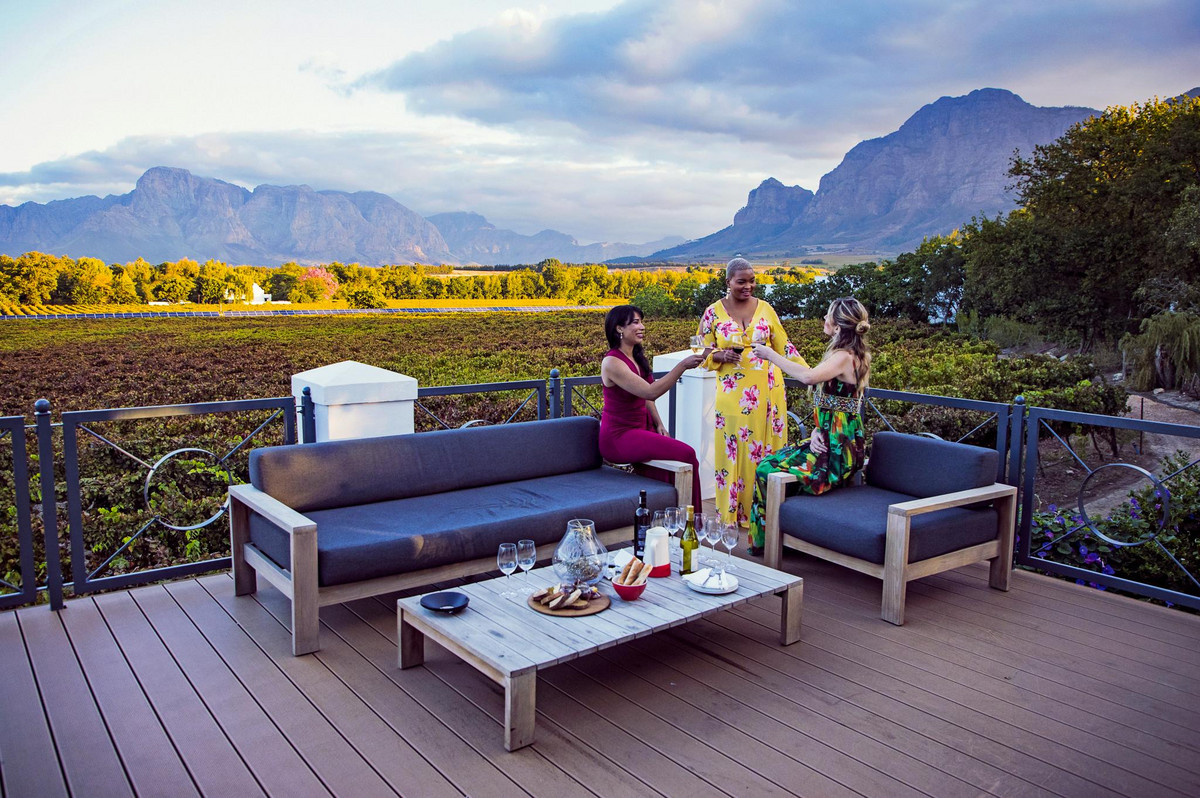
As you approach Cape Town, the vineyards become more numerous. In the Winelands around Stellenbosch, Paarl and Franschhoek, countless wine estates, chic hotels and restaurants await you, where you can sample a drop or two. Wine growing has been practised since the 17th century, when the Dutch founded Stellenbosch. But the focus here is not only on delicious drops, but also on the fascinating landscapes. Many of South Africa's 800 or so wine estates are located in the midst of a lush green landscape with fertile valleys, rugged mountain formations and beautiful forests. In addition to tastings, most farms also offer numerous outdoor activities. You can hike to your heart's content, rent a mountain bike, take a cooking class or relax by the pool and relive the impressions of the last few days.

To properly prepare for your trip
How you get there:
non-stop from Zurich to Cape Town with Edelweiss.
How long to go:
2 weeks round trip
Best time to travel:
September to March, but definitely doable all year round
Accommodation tip:
De Kelders:
https://whalesonglodge.co.za
Tsitsikamma:
www.sanparks.org/parks/garden_route/camps/storms_river/
Stellenbosch:
www.hiddenvalleywines.co.za/pages/bush-lodge
Highlights:
Cape Town, Muizenberg, Hermanus, Tsitsikamma NP, Addo Elephant Park, Oudtshoorn, wine estates around Stellenbosch.
Excursion tips:
www.getyourguide.ch
More info:
https://www.garden-route-info.co.za
Realised by Michael Bachmann
Further travel pictures under www.kissed-by-nature.com
